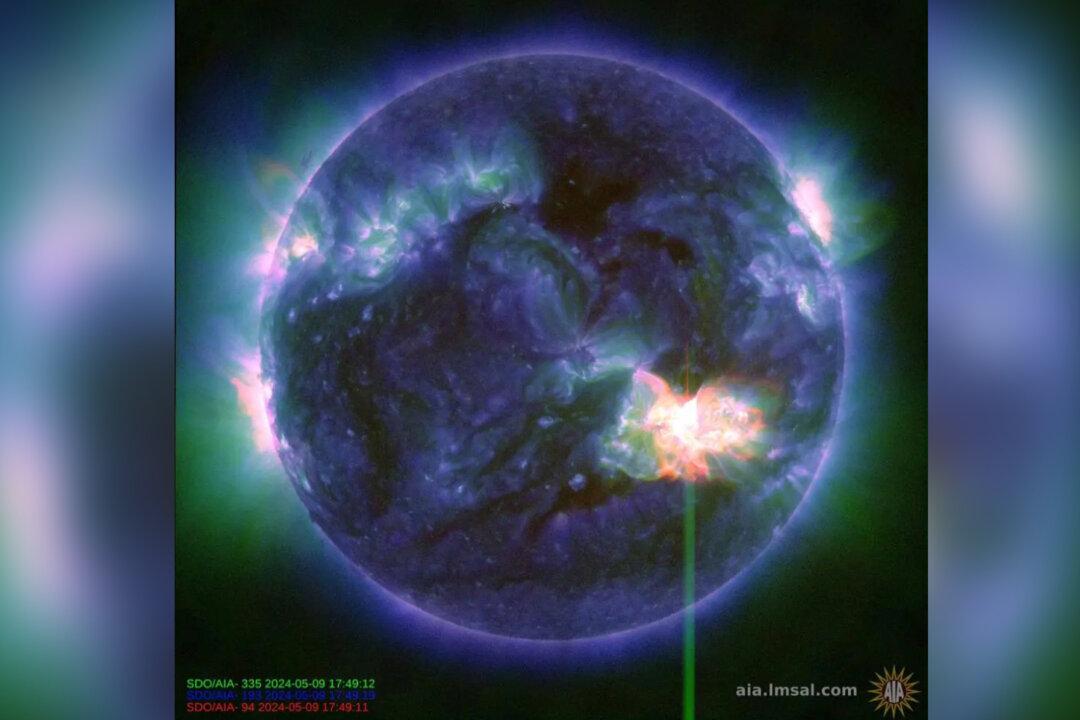An unusually strong solar storm hitting Earth could produce northern lights in the United States this weekend and potentially disrupt power and communications.
In advance of the solar storm hitting, the Space Weather Prediction Center (SWPC) of the National Oceanic and Atmospheric Administration (NOAA) issued its first severe geomagnetic storm watch warning since January 2005.

